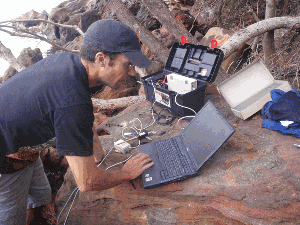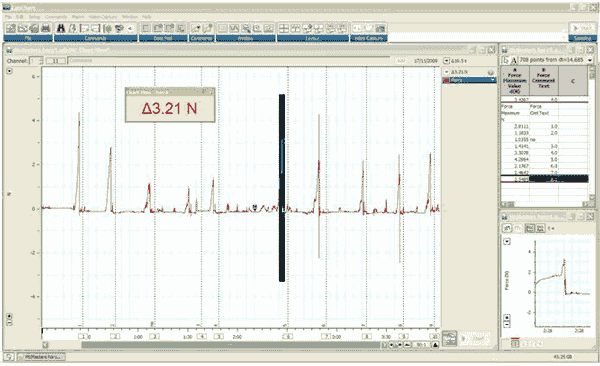
Clayman records the acute force required to dislodge a snail with his modified portable PowerLab.
PowerLab systems are being used to investigate the physiological differences in muscle characteristics between two populations of marine snails living in different environments on Australian rocky shores. The study populations are found on either wave-exposed or wave-protected shores, and the difference in wave energies may result in differences in muscle physiology.
The study is being conducted by PhD student Sam Clayman, with Assoc. Prof. Frank Seebacher from the Integrated Physiology Group at the University of Sydney (Australia).
Clayman is using PowerLab systems in both the field and lab-based components of his study to measure dislodgement forces and to stimulate excised muscle tissue.
For field measurements, Clayman modified the PowerLab system into a portable unit and uses whole-animal performance tests to determine the acute force required to dislodge a snail from the substrate. Both vertical and shear tests were done to mimic passing waves. Endurance tests were also performed on the snails. The lab-based component of the study measures snail muscle biochemistry and biomechanics in vitro.

LabChart data showing muscular force of sea snails living in the ocean
Results to date indicate there is no difference in the instantaneous force produced by snails either vertically or horizontally. However, Clayman has discovered that snails living on wave-exposed shores can endure a constant force for significantly longer than snails living on wave-protected shores.
Clayman intends to further his study by measuring the biochemical characteristics of snails from the two populations in order to illuminate the physiological basis of their muscular differences.
